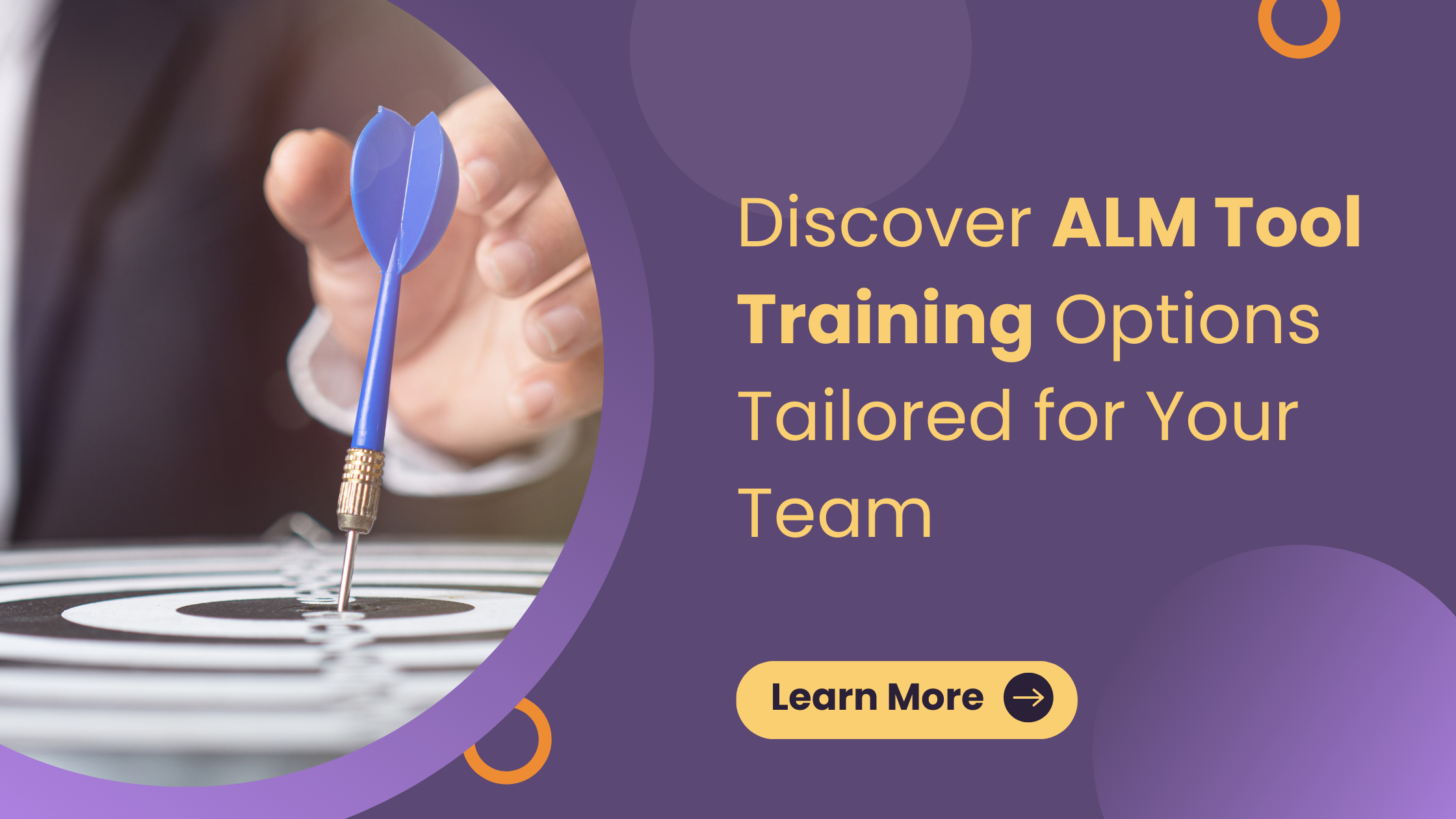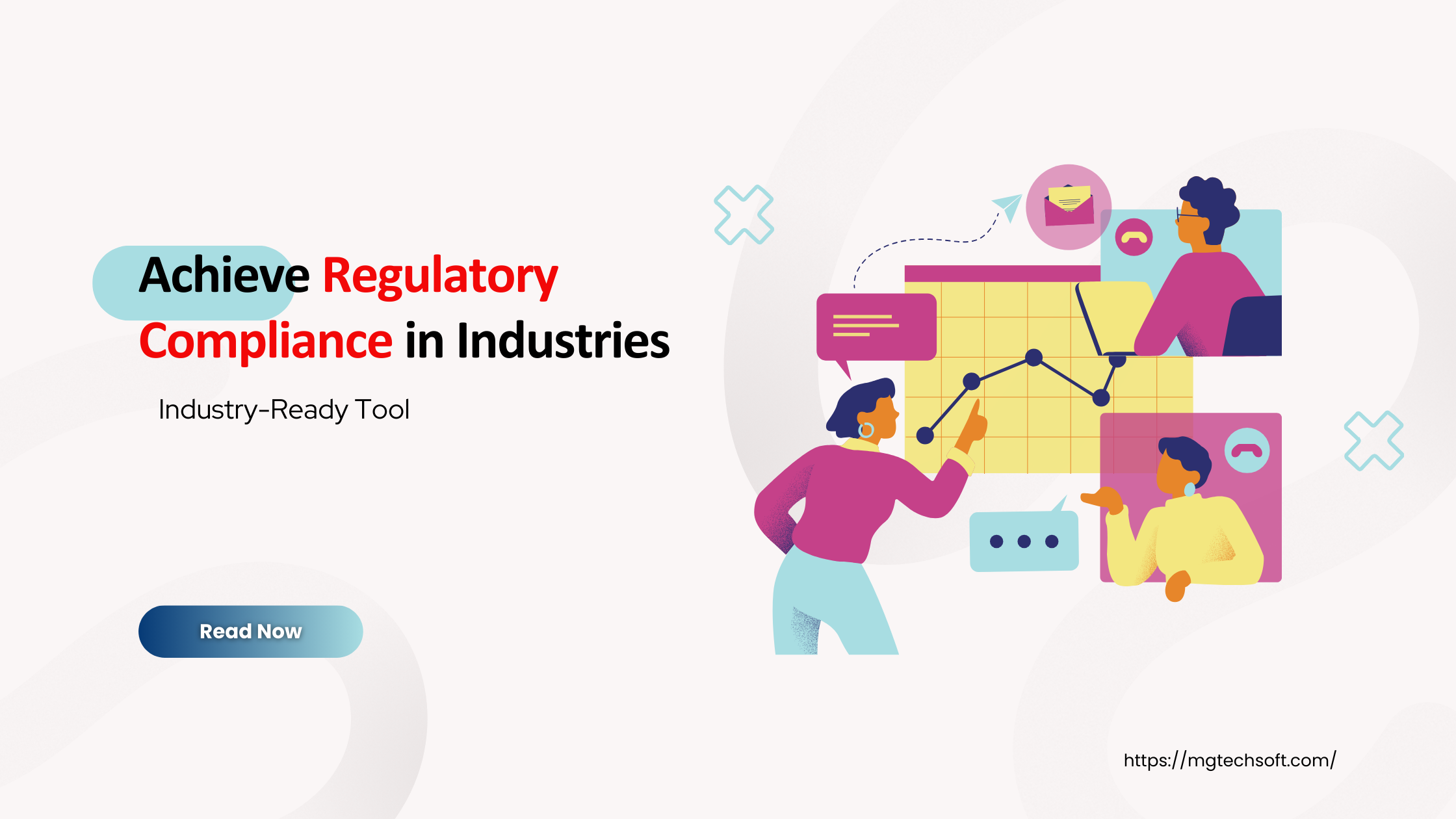Requirements Management has undergone a significant transformation. In its early stages, the initial Requirements Management (RM) document might have been a basic product concept hastily sketched on post-it notes. Today, RM has evolved into a sophisticated set of advanced tools and best practices, empowering product development teams to effectively craft high-quality software.
However, achieving a software project that impeccably aligns with customer needs, adheres to deadlines, and stays within budget remains an uncommon accomplishment. In the increasingly competitive landscape where products are built, developers are awakening to the profound impact that requirements management wields on their overall success. Many forward-thinking companies now recognize the imperative of future-proofing their requirement management processes and toolchains as a fundamental business necessity.
Within this Article, you’ll discover the nine pivotal success factors crucial to a well-functioning requirements management lifecycle. Evaluate your existing RM processes and toolset using this checklist to determine your readiness for forthcoming challenges in software development within a dynamic, IoT-connected market.
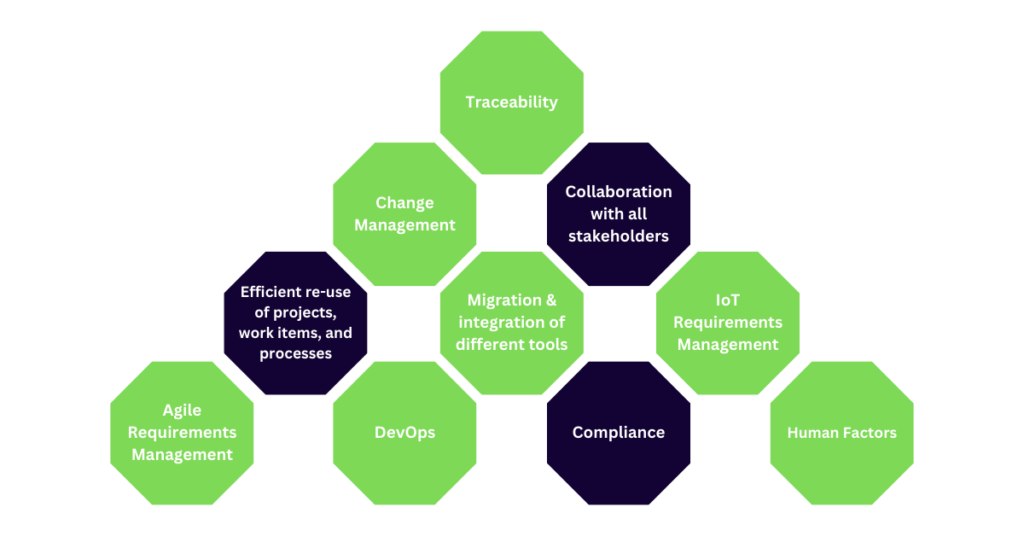
01. Traceability
Development environments have naturally evolved into heterogeneous toolchains over the years. As products become more complex, the needs of development teams grow, prompting the addition of new elements to their toolbox. However, integrating these new tools with the existing toolchain is a manual process, resulting in a patchwork-like pattern of development tools. This scenario brings forth challenges such as limited traceability, revision control difficulties, and high maintenance costs.
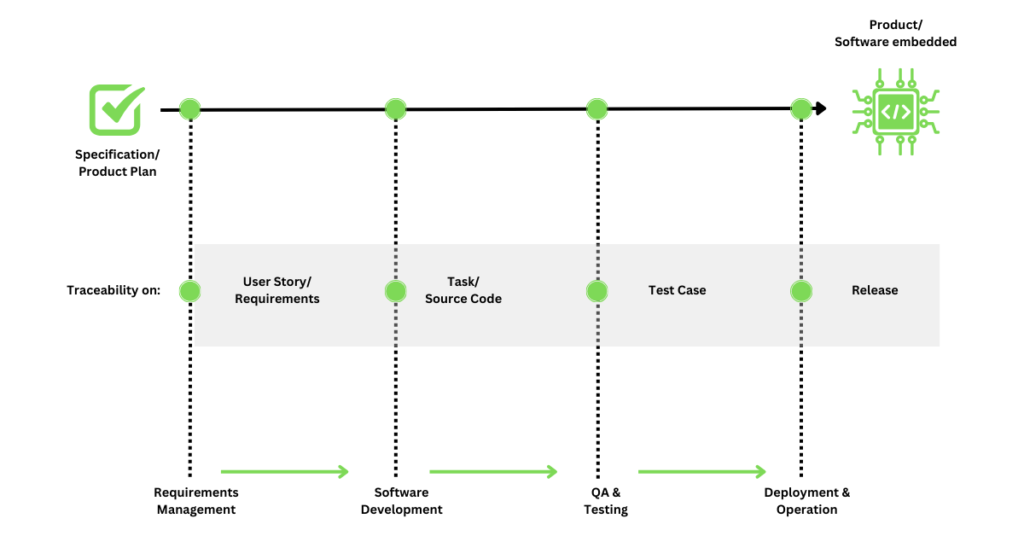
Navigational Challenges: Modern development teams heavily reliant on single-point solutions face significant challenges in navigating this intricate environment.
Key Enabler: Establishing traceability across the entire lifecycle, from requirements to source code, test cases, and implemented features, emerges as a pivotal factor for productivity and quality.
Platform Solution: Providing teams with a scalable, lifecycle-wide development platform becomes imperative. This not only ensures traceability but also positively impacts product quality, delivery times, and process transparency.
Technological Complexity: The increasing complexity of products and their development lifecycles, driven by technological advancements, further underscores the need for a comprehensive platform.
Dig Deeper : The Crucial Role of Requirements Traceability in Successful Projects
02. Change & Configuration Management
As development lifecycles embrace collaboration, iteration (Agile), and responsiveness to evolving customer needs, the challenge of change management intensifies. Traditional requirements management methods struggle to keep pace with this accelerating lifecycle, particularly when stakeholders from diverse engineering disciplines edit the same set of requirements documents, leading to conflicting versions.
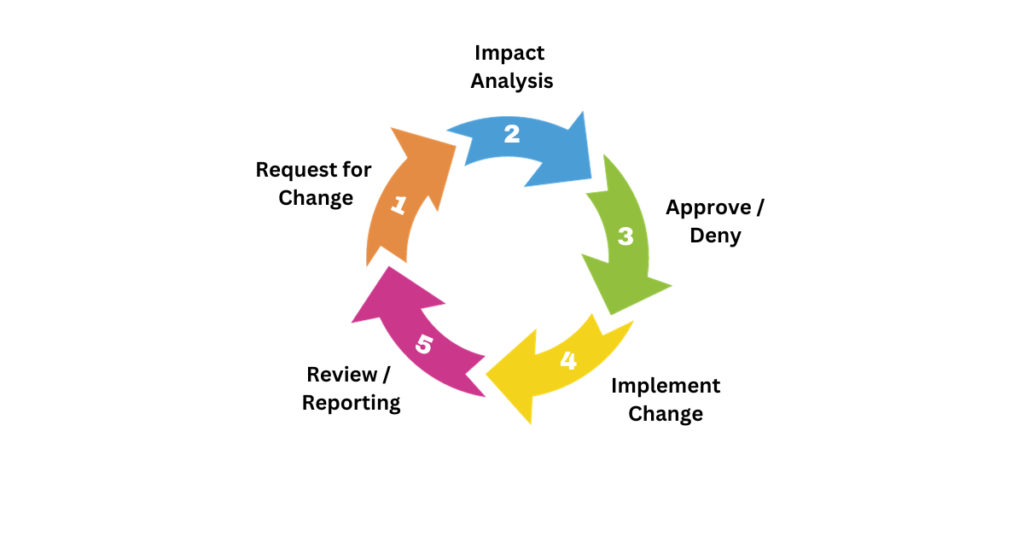
Collaborative Challenges: The collaborative and iterative nature of modern development lifecycles, especially in Agile environments, poses challenges for legacy requirements management methods.
Conflict Resolution: Tracing changes and analyzing their impact on product design and quality becomes vital. Establishing traceability sets the foundation for creating a formal plan to implement changes effectively.
Configuration Management: Future-proof requirements management necessitates robust configuration management. This involves tracking changes, allowing teams to roll back mistakes, and linking code fixes or updates to defects seamlessly.
Efficiency Gains: Recognizing the importance of an efficient change process, studies indicate potential reductions of up to 33% in the typical product development cycle time. Source: McKinsey and Company.
03. Collaboration with All Stakeholders
In a swiftly evolving and deeply integrated Agile development landscape, efficient collaboration among all stakeholders is as essential as having electricity in a building. Its significance is paramount, and in the future, as barriers between development disciplines crumble, the importance of collaboration is set to increase.
Fundamental Importance: Collaboration is not just a desirable aspect but a fundamental necessity for the success of any development project in the fast-paced and integrated Agile environment.
User-Centric Approach: Capturing and defining requirements requires active involvement not only from requirements engineers but also from testing, QA professionals, and end-users. This ensures a comprehensive understanding of the required functionality.
DevOps Integration: With the growing influence of DevOps and its holistic perspective on software development, collaboration becomes even more critical. Both Agile and DevOps emphasize the need for disciplines to collaborate, breaking down silos throughout the development lifecycle.
Technical and Cultural Challenge: Collaboration is identified as a key success factor for future-proof requirements management, presenting both technical challenges and requiring a cultural shift. Management plays a pivotal role in fostering efficient cooperation among stakeholders through the adoption of new processes and tools.
04. Efficient Re-use of Assets
In the pursuit of advancing software development, recent progress prioritizes optimizing processes rather than revolutionary leaps. While the concept of reusing is not groundbreaking, making incremental improvements in development time and costs significantly enhances overall profitability.

Strategic Reuse: In the face of increasingly sophisticated software products, providing developers access to project history and facilitating the utilization of existing data, common assets, and shared processes emerges as a transformative advantage.
Quality Enhancement: The reuse of tested code, proven to be reliable, plays a pivotal role in fortifying the quality and robustness of products. This strategic approach contributes to the overall efficiency and dependability of software.
Product Line Development: Building a product line with multiple variants allows for the recycling of requirements and various components, such as source code, test cases, and processes. This approach is particularly valuable in scenarios involving safety-critical development, where compliance requirements necessitate intricate development practices.
Cost Savings through Templates: In situations demanding complex processes, such as safety-critical development, reusing project templates embedded with established and proven processes translates into substantial cost savings. This becomes especially crucial in adhering to compliance requirements while streamlining development practices.
Efficiently harnessing and repurposing assets not only drives cost-effectiveness but also contributes to the overall reliability and resilience of software products.
05. Migration & Integration of Different Tools
Employing a central platform as the nucleus, offering a singular source of truth for diverse disciplines throughout the lifecycle, proves highly advantageous. However, in certain proprietary development scenarios, achieving this simplification of the tool ecosystem can pose challenges.
Tool Ecosystem Complexity: Proprietary development landscapes often resist the streamlining of the tool ecosystem into a unified platform. Challenges arise from overlaps, gaps in functionality within single-point software, and communication difficulties between tools, contributing to tool friction.
Overcoming Tool Friction: To address the limitations of a fragmented tool environment, the migration of data and the integration of processes across tools become pivotal strategies. This approach aids in mitigating issues arising from the incompatibility of tools and ensures a smoother flow of data and work processes.
Integrated Solutions: Successful requirements management and development teams prioritize tools that either provide built-in integrations or offer the flexibility to create interfaces. This ensures an uninterrupted flow of data and work processes across the entire lifecycle.
Dig Deeper: Mastering Digital Requirements Management: A Comprehensive Guide
06. IoT Requirements Management
Effectively managing requirements poses a unique challenge, particularly in the realm of Internet of Things (IoT)-ready embedded products, where deliverables encompass hardware, software, and service components. The convergence of distinct development streams, each utilizing its own tools, can lead to disarray at the intersection of hardware engineering, software development, and service innovation processes.
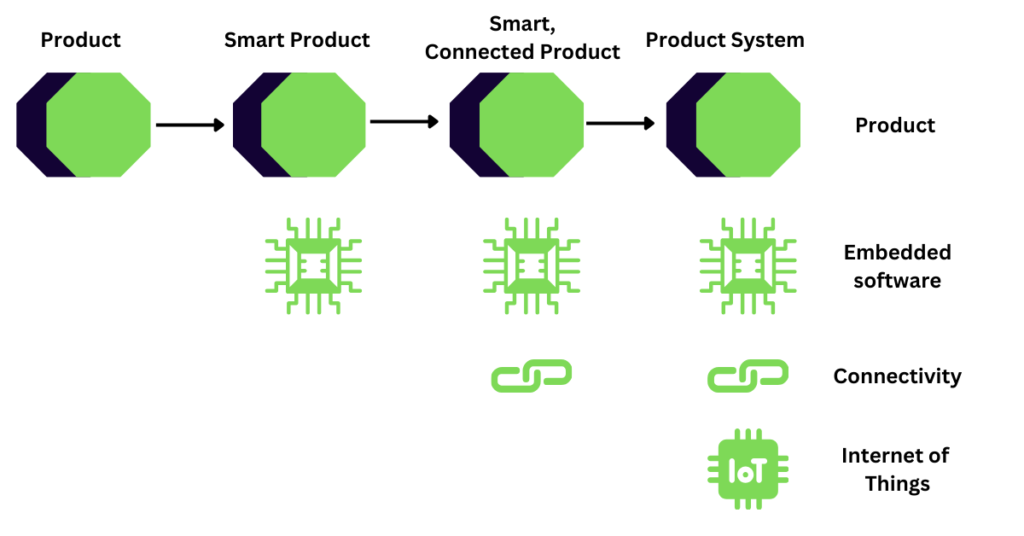
Challenge of Divergent Streams: The management of requirements becomes intricate in IoT-ready products, given the diverse elements involved. Hardware, software, and service components necessitate orchestrated development streams, each with its specific tools. Without a cohesive approach, chaos ensues.
Holistic View of Product Lifecycle: Addressing challenges requires embracing a holistic view of the product lifecycle. Encouraging teams to conceptualize a single, interconnected product lifecycle proves to be a management challenge. Providing them with a centralized platform becomes essential, facilitating the visualization and management of the overarching lifecycle comprising parallel development processes.
Integrated Approach for Benefits: The adoption of an integrated approach extends beyond addressing challenges; it contributes to the safety, reliability, and security of IoT-connected embedded products. This approach not only supports existing compliance needs but also prepares for future regulatory requirements. Moreover, it enhances trust in products by ensuring a unified and secure development process.
Navigating the intricacies of IoT requirements mandates a strategic shift towards integrated thinking, supported by centralized platforms, to ensure synchronized development across hardware, software, and service components. This approach becomes a cornerstone for meeting compliance standards and fostering confidence in the reliability of IoT-connected products.
07. Agile Requirements Management
Requirements form the foundational element of the transition to Agile, a trend that has become definitive, even in safety-critical industries where Agile adoption once seemed implausible.
Widespread Agile Adoption: The pervasiveness of Agile methodologies is evident, with 94% of organizations incorporating Agile processes in various stages of the development lifecycle. Notably, 33% embrace Agile throughout the entire lifecycle, highlighting its increasing acceptance.
Agile Requirements Management Process: The Agile Requirements Management process revolves around user stories developed collaboratively with all stakeholders. This includes end users and representatives from diverse engineering disciplines across the development lifecycle. User stories capture the required functionality from the user’s perspective, allowing flexible changes based on iterative and incremental feedback during the development process.
Cultural Shift with Agile: Adopting Agile entails a fundamental change in both culture and processes. Despite the inherent challenges, teams attesting to the transition emphasize that the adoption of Agile can be smoother with the right tools. Adequate tool support throughout the lifecycle mitigates the cultural shock, enabling teams to realize value from the Agile transition more swiftly.
Key Considerations for Future-Proof RM Tools: When selecting a future-proof Requirements Management (RM) tool for Agile environments, several key aspects merit consideration. These include seamless collaboration, automated change control, and the automatic recording of artifact trails for comprehensive traceability across the lifecycle. Additionally, scalability, Kanban boards, DevOps support, and advanced release planning functionalities become increasingly crucial as release cycles intensify and grow in complexity.
Evolution of Agile Management Tools: Agile management tools are evolving, with fewer respondents opting for traditional tools like Microsoft® Excel (46%) compared to the previous year (60%). Similarly, the use of Google Docs has decreased from 18% to 14% over the same period, indicating a shift towards more specialized Agile management solutions.
The increasing adoption of Agile methodologies underscores the need for robust Agile Requirements Management processes supported by advanced tools. As organizations navigate the complexities of Agile transitions, the right tooling becomes instrumental in facilitating collaboration, managing changes, and ensuring traceability across dynamic and iterative development lifecycles.
Also Read: Best Practices for ALM Implementation with PTC CodeBeamer
08. Compliance
In the ever-evolving landscape of technology, the intersection of sophisticated products and widespread connectivity presents both opportunities and risks. The convergence of medical technology, autonomous driving advancements, and increased data exchange raise concerns about safety and security.
Regulatory bodies worldwide are responding with stringent standards, intensifying compliance challenges for product developers. To fortify your software development against these regulatory shifts, consider:
Traceability: Establish clear links between each development stage and compliance requirements for transparency.
Process Control: Implement measures to manage compliance-related activities and reduce the risk of deviations.
Automated Documentation: Streamline compliance reporting and documentation through automated processes.
Advanced Reporting: Generate comprehensive reports covering all processes, aiding compliance audits.
Review and Validation Processes: Ensure requirements align with regulatory standards through robust review and validation.
Collaborative RM Tools: Foster a culture of continuous compliance with collaborative requirements management tools.
This approach not only simplifies compliance complexities but also contributes to a future-proof software development framework.
09. Human Factors
In an era of shorter release cycles, escalating product complexity, and intensified interdisciplinary collaboration, managing potential friction is paramount. Unaddressed, frustration can detrimentally impact team morale and performance. Key elements for building an effective development department include:
Skilled Talent: Invest in recruiting and retaining skilled professionals to bolster your team’s capabilities.
Best-of-Breed Tools: Provide your teams with cutting-edge tools that align with industry best practices.
Central Management Platform: Establish a centralized platform to facilitate seamless workflow across processes and software solutions.
A future-proof development environment embodies transparency, accountability, and efficiency, enabling stress-free collaboration among stakeholders. For requirements engineers and those shaping product specifications, this entails:
Training in Soft Skills: Equip team members with “soft skills” such as effective communication to enhance collaboration.
Adequate Tooling Support: Provide tools that enable the translation of user needs into precise specifications and seamless communication with all stakeholders.
By fostering a culture that prioritizes these human factors alongside technological advancements, you pave the way for a well-functioning and resilient development department.
Conclusion:
In navigating the complexities of modern software development, embracing forward-thinking strategies is crucial. The Nine success factors for future-proof requirements management underscore the importance of traceability, change management, collaboration, asset reuse, migration and integration, IoT readiness, Agile practices, DevOps, compliance, and human factors. Together, these factors pave the way for efficient, transparent, and high-quality development processes.
How MicroGenesis Can Help:
We offer comprehensive support to organizations seeking to implement Requirements Management (RM) and Application Lifecycle Management (ALM) solutions. Our expert team collaborates closely with clients to understand their unique needs and challenges, ensuring that the implemented solutions align perfectly with their business goals. From initial assessment and strategy development to deployment, training, and ongoing support, we provide end-to-end assistance throughout the implementation process. Leveraging our extensive experience and cutting-edge technologies, we streamline requirements gathering, analysis, and traceability, while also optimizing the entire application lifecycle management process. Our goal is to empower organizations to enhance collaboration, improve decision-making, and ultimately achieve greater efficiency and success in their projects


